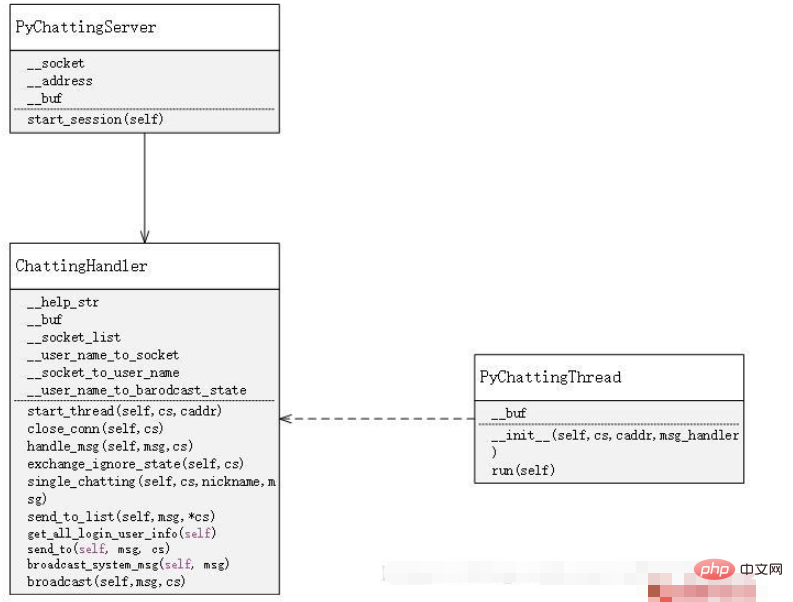
In Vue, computed is a computed property, similar to a filter, that processes data bound to the view and listens for changes. To monitor complex data types, watch needs to use deep monitoring. Both of these can detect data changes on vue. Unlike Vue, the WeChat applet can use watch and computed to make corresponding changes. Only the function this.setData() in the applet can detect data, so every time the data changes in the applet needs to be detected, the function must be manually executed. In addition, the applet can also attach these two functions to detect data changes.
Vue implements data change detection through Object.defineProperty. Injecting all binding operations into the setter of the variable can drive changes in other data when the variable changes. In fact, the implementation in a small program is simpler than in vue, because for the object in data, vue needs to recursively bind each variable in the object to make it responsive. But in the WeChat applet, whether it is an object or a basic type, it can only be changed through this.setData(). In this way, we only need to detect changes in the key value in the data instead of the key in the key value.
Test code:
Page({
data: {
test: { a: 123 },
test1: \'test1\',
},
onLoad() {
computed(this, {
test2: function() {
returnthis.data.test.a + \'2222222\'
},
test3: function() {
returnthis.data.test.a + \'3333333\'
}
})
watch(this, {
test:function(newVal) {
console.log(\'invoke watch\')
this.setData({test1: newVal.a + \'11111111\' })
}
})
},
changeTest() {
this.setData({ test:{ a: Math.random().toFixed(5) } })
},
})Now we have to implement the watch and computed methods so that when test changes, test1, test2, and test3 also change. For this reason, a button is added. When this button is clicked , test will change.
The watch method is relatively simple. First, we define a function to detect changes:
function defineReactive(data, key, val, fn) {
Object.defineProperty(data, key, {
configurable: true,
enumerable: true,
get: function() {
return val
},
set: function(newVal){
if (newVal === val)return
fn &&fn(newVal)
val = newVal
},
})
}Then iterate over the object passed in by the watch function and call the method for each key
function watch(ctx, obj) {
Object.keys(obj).forEach(key => {
defineReactive(ctx.data, key, ctx.data[key], function(value) {
obj[key].call(ctx,value)
})
})
}The parameter here is fn, which is the value of test in the watch method above. Here, the method is wrapped in a layer and bound to context.
Let’s look at computed. This is a little more complicated because we can’t know which variable in data depends on computed, so we can only traverse each variable in data.
function computed(ctx, obj) {
let keys =Object.keys(obj)
let dataKeys =Object.keys(ctx.data)
dataKeys.forEach(dataKey => {
defineReactive(ctx.data, dataKey, ctx.data[dataKey])
})
let firstComputedObj =keys.reduce((prev, next) => {
ctx.data.$target =function() {
ctx.setData({[next]: obj[next].call(ctx) })
}
prev[next] =obj[next].call(ctx)
ctx.data.$target =null return prev
}, {})
ctx.setData(firstComputedObj)
}Explain this code in detail. First call the defineReactive method for each attribute in data. Then calculate the first value of each attribute in computed, which is test2 and test3 in the above example.
computed(this, {
test2: function() {
returnthis.data.test.a + \'2222222\'
},
test3: function() {
returnthis.data.test.a + \'3333333\'
}
})Here we call the values of test2 and test3 respectively, combine the return value and the corresponding key value into an object, and then call setData(), so that these two values will be calculated for the first time. Here we use The reduce method. Both test2 and test3 depend on test, so when test changes, the corresponding functions in test2 and test3 must be called in its setter function, and these two variables are set through setData.
Mini program storeProvide more online mini programs
Declare a variable to save all the functions that need to be executed when changing, and execute each function when set. Because the value of this.data.test has not changed at this time, use setTimeout to execute again in the next round. Now there is a question, how to add functions to subs. I don’t know if you still remember the two lines of code in reduce we mentioned above. Because when the calculated values of test1 and test2 are calculated for the first time, the getter method of test will be called. This is a good opportunity to inject the function into subs, declare a $target variable on data, and assign the function that needs to be executed. Give this variable, so that you can judge whether there is a target value on data in the getter, so you can push into subs. It should be noted that you need to set the target to null immediately.
Watch has been implemented so far and computed, but it’s not over yet, there’s a problem. When using both at the same time, the key of the object in watch also exists in data, so Object.defineProperty will be called repeatedly on the variable, and the later will overwrite the previous one. Because it is not like vue where the order of calling the two can be determined, we recommend writing computed first and then watch, so that the value in computed can be watched.
Recommendation: " Mini Program Development Tutorial"
The above is the detailed content of How does the applet detect data through watch and computed. For more information, please follow other related articles on the PHP Chinese website!
 使用Python开发微信小程序Jun 17, 2023 pm 06:34 PM
使用Python开发微信小程序Jun 17, 2023 pm 06:34 PM随着移动互联网技术和智能手机的普及,微信成为了人们生活中不可或缺的一个应用。而微信小程序则让人们可以在不需要下载安装应用的情况下,直接使用小程序来解决一些简单的需求。本文将介绍如何使用Python来开发微信小程序。一、准备工作在使用Python开发微信小程序之前,需要安装相关的Python库。这里推荐使用wxpy和itchat这两个库。wxpy是一个微信机器
 小程序能用react吗Dec 29, 2022 am 11:06 AM
小程序能用react吗Dec 29, 2022 am 11:06 AM小程序能用react,其使用方法:1、基于“react-reconciler”实现一个渲染器,生成一个DSL;2、创建一个小程序组件,去解析和渲染DSL;3、安装npm,并执行开发者工具中的构建npm;4、在自己的页面中引入包,再利用api即可完成开发。
 用Python编写简单的聊天程序教程May 08, 2023 pm 06:37 PM
用Python编写简单的聊天程序教程May 08, 2023 pm 06:37 PM实现思路x01服务端的建立首先,在服务端,使用socket进行消息的接受,每接受一个socket的请求,就开启一个新的线程来管理消息的分发与接受,同时,又存在一个handler来管理所有的线程,从而实现对聊天室的各种功能的处理x02客户端的建立客户端的建立就要比服务端简单多了,客户端的作用只是对消息的发送以及接受,以及按照特定的规则去输入特定的字符从而实现不同的功能的使用,因此,在客户端这里,只需要去使用两个线程,一个是专门用于接受消息,一个是专门用于发送消息的至于为什么不用一个呢,那是因为,只
 Java语言中的微信小程序开发介绍Jun 09, 2023 pm 10:40 PM
Java语言中的微信小程序开发介绍Jun 09, 2023 pm 10:40 PM微信小程序是一种轻量级的应用程序,可以在微信平台上运行,不需要下载安装,方便快捷。Java语言作为一种广泛应用于企业级应用开发的语言,也可以用于微信小程序的开发。在Java语言中,可以使用SpringBoot框架和第三方工具包来开发微信小程序。下面是一个简单的微信小程序开发过程。创建微信小程序首先,需要在微信公众平台上注册一个小程序。注册成功后,可以获取到
 教你如何在小程序中用公众号模板消息(附详细思路)Nov 04, 2022 pm 04:53 PM
教你如何在小程序中用公众号模板消息(附详细思路)Nov 04, 2022 pm 04:53 PM本篇文章给大家带来了关于微信小程序的相关问题,其中主要介绍了如何在小程序中用公众号模板消息,下面一起来看一下,希望对大家有帮助。
 PHP与小程序的地理位置定位与地图显示Jul 04, 2023 pm 04:01 PM
PHP与小程序的地理位置定位与地图显示Jul 04, 2023 pm 04:01 PMPHP与小程序的地理位置定位与地图显示地理位置定位与地图显示在现代科技中已经成为了必备的功能之一。随着移动设备的普及,人们对于定位和地图显示的需求也越来越高。在开发过程中,PHP和小程序是常见的两种技术选择。本文将为大家介绍PHP与小程序中的地理位置定位与地图显示的实现方法,并附上相应的代码示例。一、PHP中的地理位置定位在PHP中,我们可以使用第三方地理位
 小程序中文件上传的PHP实现方法Jun 02, 2023 am 08:40 AM
小程序中文件上传的PHP实现方法Jun 02, 2023 am 08:40 AM随着小程序的广泛应用,越来越多的开发者需要将其与后台服务器进行数据交互,其中最常见的业务场景之一就是上传文件。本文将介绍在小程序中实现文件上传的PHP后台实现方法。一、小程序中的文件上传在小程序中实现文件上传,主要依赖于小程序APIwx.uploadFile()。该API接受一个options对象作为参数,其中包含了要上传的文件路径、需要传递的其他数据以及
 苏州健康码的小程序叫什么Oct 24, 2022 am 09:47 AM
苏州健康码的小程序叫什么Oct 24, 2022 am 09:47 AM苏州健康码的小程序叫“苏康码”,它是苏州市疫情防控指挥部指定的通行服务码,疫情防控期间在全市范围内通用,可以作为广大民众日常出行的重要凭证,同时作为防疫人员查验的主要依据;也是省内所有来苏逗苏人员以及在苏工作学习生活,旅游或临时停留人员申报的键康申报数据为基础,结合相关数据比对后动态生成的个人电子健康凭证。


Hot AI Tools

Undresser.AI Undress
AI-powered app for creating realistic nude photos

AI Clothes Remover
Online AI tool for removing clothes from photos.

Undress AI Tool
Undress images for free

Clothoff.io
AI clothes remover

AI Hentai Generator
Generate AI Hentai for free.

Hot Article

Hot Tools

EditPlus Chinese cracked version
Small size, syntax highlighting, does not support code prompt function

Safe Exam Browser
Safe Exam Browser is a secure browser environment for taking online exams securely. This software turns any computer into a secure workstation. It controls access to any utility and prevents students from using unauthorized resources.

SAP NetWeaver Server Adapter for Eclipse
Integrate Eclipse with SAP NetWeaver application server.

ZendStudio 13.5.1 Mac
Powerful PHP integrated development environment

VSCode Windows 64-bit Download
A free and powerful IDE editor launched by Microsoft






